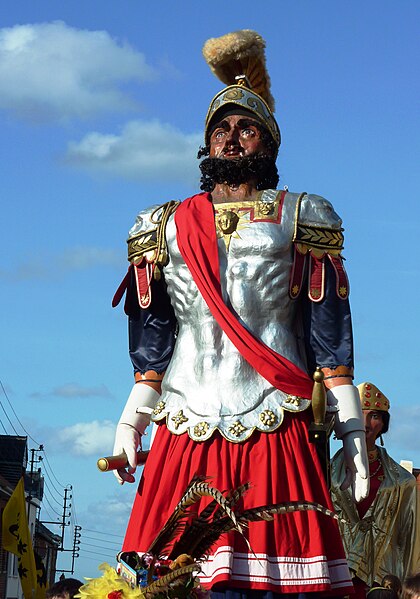Many modern heiðāni honour the wihte, though many are confused about the nature of these creatures. It is easy to mistake the wihte for ‘spirits’, though this does not represent what they truly are, in other words it’s a misleading term. At the very core of the word wihte or as many call them today wights lies the designation of ‘creature’. This means that they are corporal beings and not an otherworldly or ethereal being.
Every living being around us, seen or unseen are wihte. This goes for men, rachine and dogs. What separates the various categories of wihte is their dominion of rule. As such, the rachine are rachine because they hold sway over all men’s dooms, they are supraregional. The hūswihte are housewights because they hold sway over the hīwiski. Men are men as they hold sway over smaller, less powerful creatures (and less powerful people, i.e. the social hierarchy of mankind). Animals are animals because they are ruled by greater wihte.
It is a duty to mankind, in accordance with Aldsido, that they participate in the gifting cycle between all greater wihte. This cycle is characterised by the giving of offringas. Therefore the head of the hīwiski, the druhtin sacrifices to the rachine on the behalf of his folk as did the kuning (king) in older days. Similarly sacrifice should be offered to the household powers, the hūswihte, by the druhtin. This should not be mistaken as trying to build a bond of close friendship as it is more like paying dues to one's lord so as to keep in his favor. Offerings were also made to animals in the form of special food for added protection or healing to farm animals. This however seems to have been the role of the toufrere or charmer as part of his touferkraft. The main difference between rachine and wihte is that all rachine are wihte, but not all wihte are rachine. In plain English that means all holy powers are creatures, but not all creatures are holy powers. This gifting cycle among the Frankish people was of a nature that one must always gift greater than what they received (Curta). This however caused issues for some as if they were gifted land by their kuning and could not gift back something of greater worth, they were reduced to servitude. What is ‘greater’ depends on the perception of the receiver. Furthermore the gift may be returned over a long period of time, but in that time the debt is owed. The debt is also transferable onto the next of kin if the original receiver dies before re-gifting. What this means for man and rachine is that if one year the rachine saw it fit to give you a cow, eventually you will have to offer either a bigger one or two of the same worth. Such is the nature of the Frankish gift cycle.
What about giants? Did you have to ask… Well as was pointed out above is that all creatures are wihte. As such the giants or rise or þurse are wihte, but they are not to be considered rachine. Now this gets complicated because in the old Frankish regions we now have many processions of ‘giants’ who are seen as being protectors of the folk. Some examples are Reuze Papa & Reuze Mama (Cassel
Reuze Papa
Here are some other wihte which lean more towards the rachine spectrum:
The Greef: His name means ‘the count’ and harkens back to an earlier Frankish time where this function was held by the grāvio, the king’s right hand man. Various modern traditions surrounding this character place his ridding at mid-lent or halvfasten (halfvasten). This is and always was even prior to Christianity a very festive season. It was the point in time when winter was truly loosing its grip and spring was in for sure. In Ypres Holstein
Old Babbling Woman: Or in the native dialect she is known as Oude Quene Babelboone. On the third Sunday of lent or the ‘quene-sondagh’ (kwenasundag), children used to make tiny dollies which represented the Kwena and would carry them in a basket while going door to door singing (English trans.)
‘Old Babbling Woman,
she may be old and
she may well be ugly,
though give her an egg,
and she’ll be on her way’
This seems to represent yet another ‘winter expulsion’ ritual, where young girls collect eggs (fertility or springtime symbol) and when this was done the effigy of the Old Woman was cast away. This was one way in which the people of Ypres
In conclusion, we must derive from these examples that the Aldsido necessitates a gifting relationship between man and man, man and rachine, man and wihte. This is to ensure that prosperity may be had, if the rachine see fit do allow so. Also we see that seasons were to be ‘made’ by way of procession, offerings of fertility symbols and all manner of festivity or fīringa. We may not be able to pin point exactly where the old Frankish customs begin and where later formations arise, but we can say for sure that these customs are authentic to the region once occupied by the Frankish tribes and that vestiges must have found there way to us through their descendants who are firmly inkweðan.
Erik

No comments:
Post a Comment